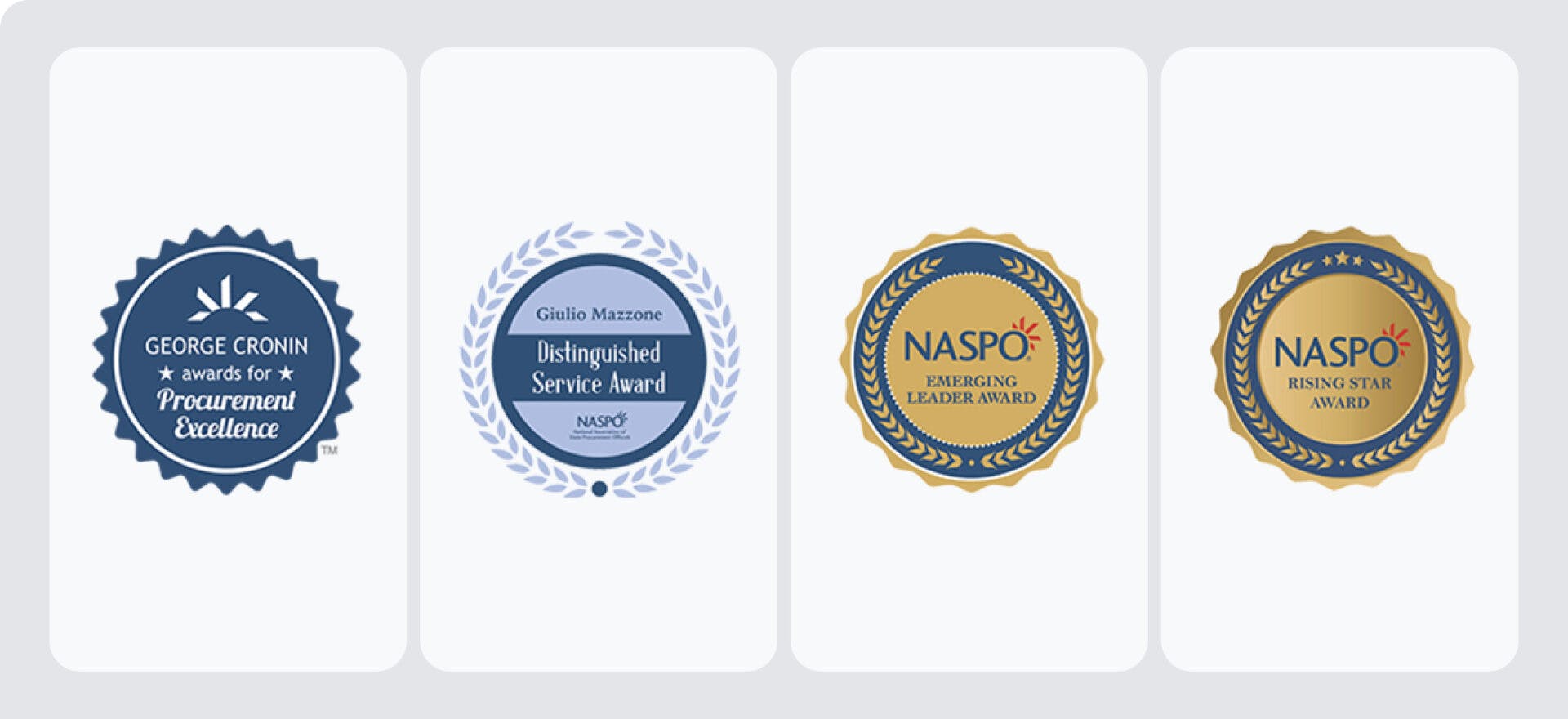NASPO Awards
The NASPO Awards celebrate the outstanding contributions of individuals to the field of public procurement. These awards recognize excellence in various aspects of procurement, including innovation, leadership, and service to the profession.

The George Cronin Award for Procurement Excellence is recognized as a premier achievement for innovative public procurement and pays homage to a founder and the first president of NASPO for his devotion to improving governmental purchasing.
The Cronin Award serves two purposes:

Recognize outstanding state procurement initiatives by procurement professionals
This award provides appreciation to the procurement personnel who have undertaken and accomplished projects that result in distinct benefits to their state in economy, efficiency, delivery of services or some combination of each.

Disseminate and encourage the adoption of successful, award-winning initiatives by other states
In this way, Cronin awardees and finalists create opportunities for improving the procurement profession nationwide, which can multiply those initial benefits many times over.
 Do you have questions?
Do you have questions?
Contact
Chadwick Stephens
Please note:
Nominations for the George Cronin Awards for Procurement Excellence are intended for state central procurement offices, and must be submitted by, or with approval from, the NASPO voting member (CPO) within your state.




